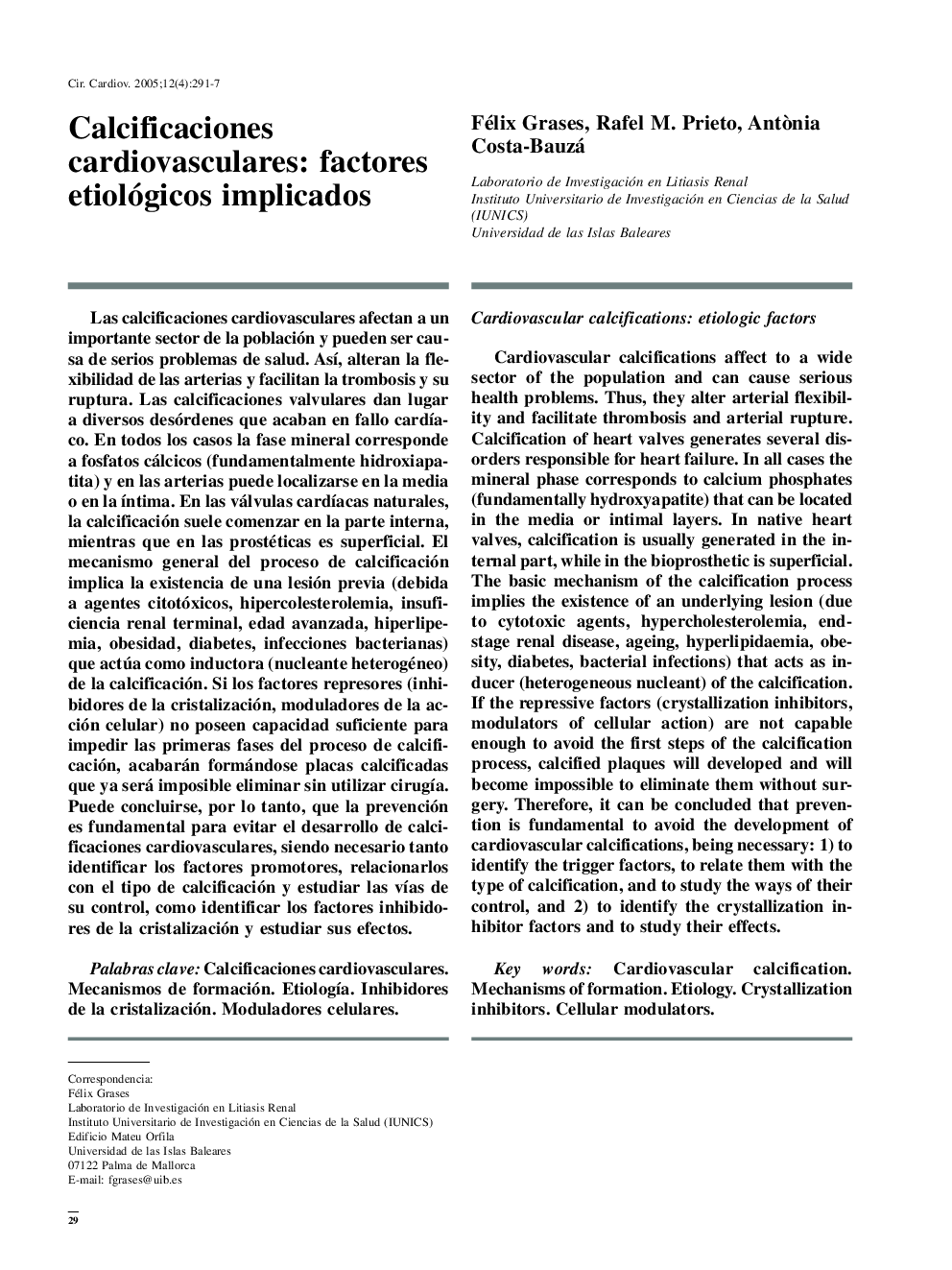| Article ID | Journal | Published Year | Pages | File Type |
|---|---|---|---|---|
| 9166684 | Cirugía Cardiovascular | 2005 | 7 Pages |
Abstract
Cardiovascular calcifications affect to a wide sector of the population and can cause serious health problems. Thus, they alter arterial flexibility and facilitate thrombosis and arterial rupture. Calcification of heart valves generates several disorders responsible for heart failure. In all cases the mineral phase corresponds to calcium phosphates (fundamentally hydroxyapatite) that can be located in the media or intimal layers. In native heart valves, calcification is usually generated in the internal part, while in the bioprosthetic is superficial. The basic mechanism of the calcification process implies the existence of an underlying lesion (due to cytotoxic agents, hypercholesterolemia, endstage renal disease, ageing, hyperlipidaemia, obesity, diabetes, bacterial infections) that acts as inducer (heterogeneous nucleant) of the calcification. If the repressive factors (crystallization inhibitors, modulators of cellular action) are not capable enough to avoid the first steps of the calcification process, calcified plaques will developed and will become impossible to eliminate them without surgery. Therefore, it can be concluded that prevention is fundamental to avoid the development of cardiovascular calcifications, being necessary: 1) to identify the trigger factors, to relate them with the type of calcification, and to study the ways of their control, and 2) to identify the crystallization inhibitor factors and to study their effects.
Related Topics
Health Sciences
Medicine and Dentistry
Cardiology and Cardiovascular Medicine
Authors
Félix Grases, Rafel M. Prieto, Antònia Costa-Bauzá,
